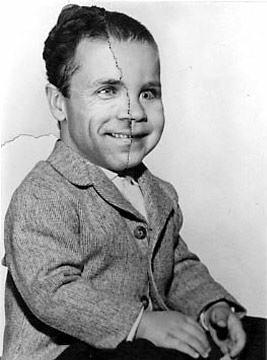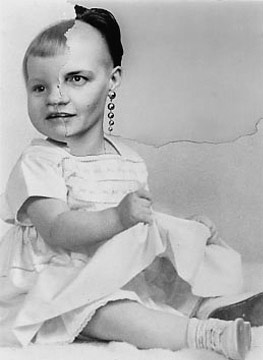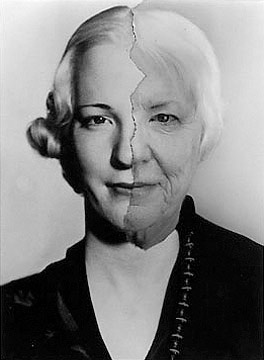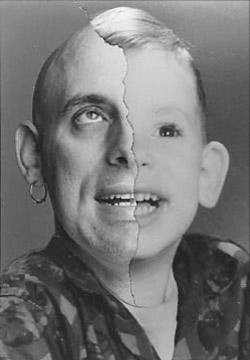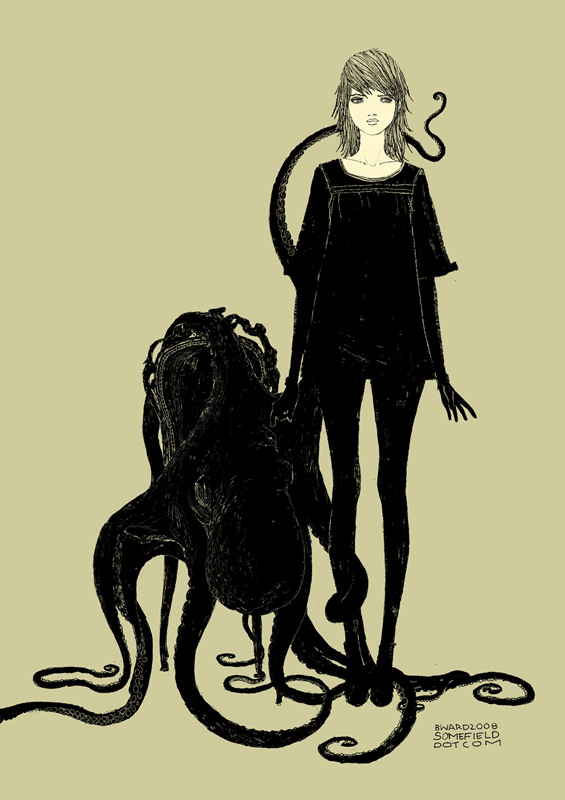Saturday, 28 March 2009
The Mystical Shogun Kunitoki Strobe Light
The Mystical Shogun Kunitoki Strobe Light
from Sami Sänpäkkilä on Vimeo.
For those looking for the ultimate psychedelic experience, the new Shogun Kunitoki album Vinonaamakasio is available as a Picture vinyl LP featuring two animation loops that can be viewed using this magical Shogun Kunitoki Strobe Light. The effect is impossible to capture on video and can only be thoroughly enjoyed in real life. In addition to the kit you will need a 9V battery which is not included in the package.
To operate the strobe light attach a 9V battery and switch it on. Aim light on the surface of the LP rotating at 33 1/3 rpm. The space you are in should be completely dark. Please note that using the owl strobe light can be dangerous for persons with epilepsy or tendency to it.
You can order now from fonal.com/shop
Peter Tosh

Peter Tosh
Peter Tosh (October 9, 1944 – September 11, 1987) was a pioneer reggae musician, as well as a trailblazing Rastafarian.
Olaf Erwin

Olaf Erwin, born in 1959 in Hilversum, The Netherlands, has a passionate love affair with life, and fully enjoys everything that it has to offer. An ever-rising photographer, his work constantly garners new attention, and maintains the respect of his loyal fans. His ‘oeuvre’ is a manifestation of his incredible passion and genuine engagement with subjects.

Olaf has been professionally active for over twenty-five years, and in this period he has succeeded in evolving from a participating photographer to a director who creates his own reality. Olaf’s pictures are filled with humor, imagination and exuberance, but they go much further than simple visual intrigue. His work broach ideas and visions of freedom, beauty, loneliness, and being different. He convinces his public in a shameless and versatile manner, questioning established norms. Olaf consistently expresses his own standpoints, fulminating against narrow-mindedness, smugness, and rigid norms, but not without humor, bravura and bite.

An authentic Olaf is a blow to the head, ruthlessly direct, but simultaneously wrong footing the viewer and poking fun. One reviewer remarked that in Erwin Olaf’s photographs everyone stares unwaveringly into the lens–thus looking straight into the photographer’s big blue eyes, as it were. Olaf approaches the world openly and enthusiastically and this is also the way in which, in his work, he dares to enter the public debate. Olaf is a master in generating his own world, whether this be in autonomous photographic series or film projects. He is also hypercritical, nothing escapes him, so that pictures are created with a placement composed so meticulously that it is almost painful to examine. With these, Olaf manages to produce fictitious yet convincing images of bygone days, fairytales and dreams, populated by historical figures, elves, dwarves, lunatics, and god knows who.
Sylvia Plath's Son Commits Suicide

The son of writers Sylvia Plath and Ted Hughes committed suicide last week, hanging himself at his home in Fairbanks, Alaska, following a battle with depression, reports the Times of London. Nicholas Hughes, 47, was a professor of fisheries and ocean sciences but had recently left his position to take up pottery. His mother killed herself in 1963, when he was still a toddler, after his father left her for another woman.
Source: Times (UK)
Auditory Illusion
in Computers

Shortly I came across an mp3, titled the “Virtual Hair cut”, and believe me I was bewitched by the level of hearing illusion. By the time I finished the mp3, I got hold of my hair to assure that they are ‘there’ and It was just an illusion!!
So highly recommended, download and play it with the Headphones on!! (Headphones are a must).
Virtual Haircut
A Matchbox:
A Woman’s Voice:
Auditory illusion?
Most of us are aware of the fun side of Optical illusion but auditory illusion is a less popular term. Auditory Illusion is the illusion of hearing sounds which are not present in the stimulus, or impracticable sounds. The illusion demonstrates our ability to locate sounds in space; by comparing the inputs to the two ears, we can work out where a sound is coming from.
For those who are interested in going into details of “Whats going on?”
Now The Technology Part!
So as its supposed to be a technology blog, the technology part:
The fact.co.uk reports that several projects are exploring the potential for creating an illusion of presence within virtual audio environments and researching ways to piece together illusory space onto an existing space through the use of a hyper real 3D audio system to provide an invisible but realistic “Parallel world” .
Researcher’s are looking forward to the prospects of transmitting a 3D audio experience live (in realtime) from one place to another via the internet. Other longer term project exploring various viewer tracking devices as a ‘hands free’ interactive model for realtime audio composition.
Friday, 27 March 2009
Angus MacLise

Angus MacLise (March 4, 1938 - June 21, 1979) was a percussionist, composer, mystic, shaman, poet, occultist and calligrapher. He is probably best known as the first drummer for the Velvet Underground, but had an intriguing career outside of that group.
MacLise was a member of La Monte Young’s Theater of Eternal Music, with John Cale and Tony Conrad. He was also an early member of The Velvet Underground, having been brought into the group by flatmate John Cale. MacLise played bongos and hand drums during 1965 with the first incarnation of the band.
Play Angus MacLise Radio
Wednesday, 25 March 2009
Daniel Edwards

“Daniel Edwards is an American sculptor; Born: La Porte, Indiana, 1965. His pieces address celebrity and popular culture in ways that have often stirred controversy. The release of the pieces is generally accompanied by press releases.
His works include a sculpture of the disembodied head of Ted Williams, a life-sized statue of Britney Spears giving birth while nude on her hands and knees on a bearskin rug, a Presidential bust of Senator Hillary Clinton, and a 25 foot bust of Fidel Castro. ” - Wikipedia 2008
Edwards’ artwork has been reviewed by the New York Times, The Chicago Tribune, The Miami Herald, The Los Angles Times, ArtInfo.com and Artnet.com amongst many other articles nationally and around the world. Often vilified for his use of celebrity, Daniel’s artwork has also been seen as prophetic and constant in its ability to humanize social issues the media and public have trouble addressing.
Daniel Edwards
Tokyo Sonata
An ordinary Japanese family slowly disintegrates after its patriarch loses his job at a prominent company.
Watch The Elegant Universe (full-screen version)

The full-screen version plays the programs at double the regular playback size. Because this requires additional processing power, some older computers may not play the full-screen option smoothly. For technical reasons, full-screen is only available in QuickTime. If you experience difficulty viewing, it may be due to high demand. We regret this, and suggest you try back at another time. Note that NOVA programs are not available for downloading due to rights restrictions.
The Elegant Universe
Nice and Free CSS Templates
Nice and Free CSS Templates
mycelly
Top 25 Censored Stories for 2009
- #1. Over One Million Iraqi Deaths Caused by US Occupation
- # 2 Security and Prosperity Partnership: Militarized NAFTA
- # 3 InfraGard: The FBI Deputizes Business
- # 4 ILEA: Is the US Restarting Dirty Wars in Latin America?
- # 5 Seizing War Protesters’ Assets
- # 6 The Homegrown Terrorism Prevention Act
- # 7 Guest Workers Inc.: Fraud and Human Trafficking
- # 8 Executive Orders Can Be Changed Secretly
- #9 Iraq and Afghanistan Vets Testify
- # 10 APA Complicit in CIA Torture
- # 11 El Salvador’s Water Privatization and the Global War on Terror
- # 12 Bush Profiteers Collect Billions From No Child Left Behind
- # 13 Tracking Billions of Dollars Lost in Iraq
- # 14 Mainstreaming Nuclear Waste
- # 15 Worldwide Slavery
- # 16 Annual Survey on Trade Union Rights
- # 17 UN’s Empty Declaration of Indigenous Rights
- # 18 Cruelty and Death in Juvenile Detention Centers
- # 19 Indigenous Herders and Small Farmers Fight Livestock Extinction
- # 20 Marijuana Arrests Set New Record
- # 21 NATO Considers “First Strike” Nuclear Option
- # 22 CARE Rejects US Food Aid
- # 23 FDA Complicit in Pushing Pharmaceutical Drugs
- # 24 Japan Questions 9/11 and the Global War on Terror
- # 25 Bush’s Real Problem with Eliot Spitzer
Steven Arnold's 'Luminous Procuress'

A series of erotic vignettes and sexual imagery(mostly of the gay variety) are presented courtesy of The Cockettes(a gay/drag performance art ensemble of late 60s/early 70s San Francisco).
Luminous Procuress
The 10 Most Puzzling Ancient Artifacts

Workmen hacking and burning their way through the dense jungle of Costa Rica to clear an area for banana plantations in the 1930s stumbled upon some incredible objects: dozens of stone balls, many of which were perfectly spherical. They varied in size from as small as a tennis ball to an astonishing 8 feet in diameter and weighing 16 tons! Although the great stone balls are clearly man-made, it is unknown who made them, for what purpose and, most puzzling, how they achieved such spherical precision.
More here
Monday, 23 March 2009
Picasso’s Top 7 Creative Tips For Artists

“The artist is a receptacle for emotions that come from all over the place: from the sky, from the earth, from a scrap of paper, from a passing shape, from a spider’s web.”
“Some painters transform the sun into a yellow spot, others transform a yellow spot into the sun.”
Pablo Picasso was a Spanish painter, sculptor and creator in many creative fields. As one of the most recognized figures in twentieth-century art, he is (perhaps) best known for co-founding the Cubist movement and for the wide variety of styles embodied in his work. Aside from having a hand in every art movement of the 20th C, he also had some interesting things to say about creativity and life. Here are 7 enlightening tips (via the positivity blog) that are sure to inspire creativity from different levels.
1. You have to believe to be able to do.
“He can who thinks he can, and he can’t who thinks he can’t. This is an inexorable, indisputable law.”
This is a great quote because it doesn’t just say that you should “believe in yourself!”. It explains why you need to believe in yourself and your ability to do something to actually do it.
The funny thing is that it’s hard to see how much your beliefs control your performance and how you see your world when you are used at looking at things from just one perspective.
When you think you can do something instead of not your perception of that thing changes. And your perception of yourself too. Without those changed perspectives it will be hard to find the courage, motivation, enthusiasm and whatever else you may need. And then there are self-fulfilling prophecies.
If you think you’ll fail you are likely to hold you self back or even trip yourself up (sometimes unconsciously). If you on the other hand think you can do something your mind will start to find solutions and focus on fixing things instead of whining about them. From all of the stimuli around you things, solutions and opportunities will just start to pop up. Without that focus on the right thing, on your ability to do, your mind may not find the resources and solutions that are needed.
2. Push your limits.
“I am always doing that which I cannot do, in order that I may learn how to do it.”
Pushing yourself and stretching is necessary to grow. And the more you push yourself the quicker you can grow.
But it can be scary. My best tip so far: stay present as much as you can while doing something you cannot yet do.
This can greatly decrease possible negative feelings that are holding you back. And with those feelings out of your mind and body it becomes easier to focus, to feel positive feelings and actually perform well and learn to do whatever you have set your mind upon.
For tips on that check out 8 Ways to Return to the Present Moment. My three favourites among that bunch are at the moment: focus on what’s right in front of you, pick up the vibe from present people (I listen to Eckhart Tolle cds very often) and focusing on your breathing.
3. Don’t wait for inspiration or the right moment.
“Inspiration exists, but it has to find us working.”
Inspiration can show up on its own, waltzing in through a door or a window. But doing things that way makes work inconsistent – both in quality and quantity - and you spend a lot of time waiting.
I find that it’s better to follow Pablo’s suggestion and just start working. For the first minutes what you do may suck quite a bit and it’s hard going. But after a while inspiration seems to catch up with you. Things start to flow easier and your work is of a higher quality.
If you feel inspired one day that’s great. Use your inspiration. But don’t limit yourself to the moments where you feel inspired or you feel like the moment is just right to do something. Act instead. A lot of the time you can find inspiration along the way. Or accomplish whatever you want to do despite the moment not looking just as you would like it to.
4. Act.
“Only put off until tomorrow what you are willing to die having left undone.”
“Action is the foundational key to all success.”
I know. If you have been reading this blog for a while you may have noticed that taking action is included in a lot of the articles. But that’s because, as Picasso says, action is the foundation. Without taking action any information – no matter how useful – will be pretty useless. This is also the part of personal growth or just life that is often forgotten or perhaps avoided.
It’s scary. It can feel difficult to do it. Or you may not feel like it’s the right moment now. But developing a habit of taking more and more action can make a huge difference. Have a look at How to Take More Action: 9 Powerful Tips for help to develop such a habit. My favourite tip among those is the same as for when pushing your limits: stay present to decrease inner resistance to taking action.
5. Ask the right questions.
“Others have seen what is and asked why. I have seen what could be and asked why not.”
It’s easy to ask yourself the wrong questions. To ask yourself questions that just will give you answers that confirm that you are incompetent, foolish, wrong and tell you that your future is limited. Questions that will sink you instead of help to lift you up.
So instead, ask yourself empowering questions.
* When having a seemingly negative experience ask yourself: what is good about this? What can I learn from this? There is always something you can learn and have use for to create positive experiences later on.
* When interacting with others ask yourself: How can I bring even more value (understanding, help, practical solutions, fun, excitement etc.) to this interaction?
* In just about any situation you can always ask yourself: what’s great about this situation/experience? This is a quick way to shift your mood and thoughts into more positive, resourceful and empowered forms through gratitude.
There are of course many more empowering questions you can ask yourself. I think the main point is to reframe the questions you ask yourself into positive questions that open up - instead of closes – the door to opportunities and possibilities.
6. See the hidden beauty by not judging.
“If only we could pull out our brain and use only our eyes.”
One of big advantages of becoming more present in your everyday life is that you decrease the amount of analysing and labelling you do to the things/people in your surroundings. You don’t judge as much.
This might sound strange but in the moments when you are present the ordinary world becomes more interesting and wonderful. Colors can seem brighter. Your see more aliveness in trees, nature and in people. You see the wonder of all your man-made gadgets and stuff. Things that most often seem common, routine and boring become fascinating and something you can appreciate.
It’s like you are observing your world with more clarity and curiousness. Like a little kid again, discovering things while they still feel fresh. Before they have just become walking, talking and growing labels with years of associations and thoughts attached.
This is a bit like the first tip in this article. Before you actually use it – if you just think about it in your mind – it may not make that much sense. I highly recommend reading/listening to Eckhart Tolle to gain a deeper understanding of being present. He and Oprah are doing free 90 minute talks about his book A New Earth right now. Check out the book and those webcasts.
7. It’s not too late.
“Youth has no age.”
Don’t let social conditioning tell you what you can or cannot do just because you are of one age or another. Age is most of the time just in your head anyway. Take tip #1 into consideration and choose for yourself what you can do. And use tip # 6 and ask yourself the right questions instead of ones that limit you.
And, remember, the present moment s all there ever is anyway. So don’t get caught up in the past too much. Most of the time you really don’t have to act consistently with what you have done before. If you do, then that’s your choice. And you can decide to do something different too. Right now.
It is really only too late to change if you look at your life as a time-line. If you learn to become more present, if you learn to live more in the now, much of that thinking just falls away. You realize that you can consciously choose and do pretty much whatever you like in the present moment and built a future with new possibilities.





